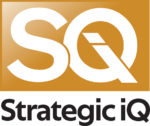
Internal Controls for Comprehensive Risk Management
Running any business involves risk to a certain degree, but with careful and strategic financial planning that risk can be minimized and managed. Crucial to this risk management, however, is a thorough understanding and mastery of the internal controls at your disposal.
Internal controls refer to activities, processes, procedures, or protocols implemented in your company that protect you from potential hazards or risks. These can be physical (locks, safes, password-protected files, etc.), but are more often the organizational practices that not only help operations run effectively, but also increase your managerial control over day-to-day and long-term performance.
The Committee of Sponsoring Organizations of the Treadway Commission’s (COSO) breaks down internal business controls into a framework of five distinct sections: the control environment, risk assessments, control activities, communication of information, and monitoring. These components together minimize the risk of financial loss or organizational disarray.
The control environment itself involves the recruitment, retainment, and management of competent and satisfied employees. A workforce that is invested in their individual roles and thrive in their workplace make fewer mistakes and are more dedicated to minimizing risk. Independent oversight from a board of directors or outside shareholders can also help keep the overall work environment accountable, with clear processes for individual job responsibilities and how to report potential concerns.
Risk assessments obviously go a long way in overall quality control of business operations. This often involves defining clear objectives and both researching and analyzing potential risks that the company could encounter during their means of reaching those objectives. Having this thorough assessment ensures that the company is better equipped to handle any potential risks that may come your way.
Control activities refers to company-specific and standardized policies or procedures that are utilized while pursuing business objectives. For example, a manufacturing company will have specific policies regarding outside suppliers, delivery timelines, and employee regulations. This allows for careful planning of projects and consumer demands to ensure there’s a decreased risk of disruption in production or client dissatisfaction.
Communication cannot be understated when considering risk management. Gathering data and generating reports is a means of better understanding the current state of your business and communicating that information internally and externally to all relevant stakeholders, employees, and investors helps to keep you accountable.
Finally, monitoring of all these other components provides a higher degree of oversight into how your business is running comprehensively. This involves evaluations and regular reviews to determine which strategies and processes are working, and which might need to be adjusted to better meet business objectives.
All of these internal controls, when strategically planned and managed, are massively beneficial to understanding the level of financial risk your business may be facing and proceeding to minimize that risk as much as possible.

0 Comments